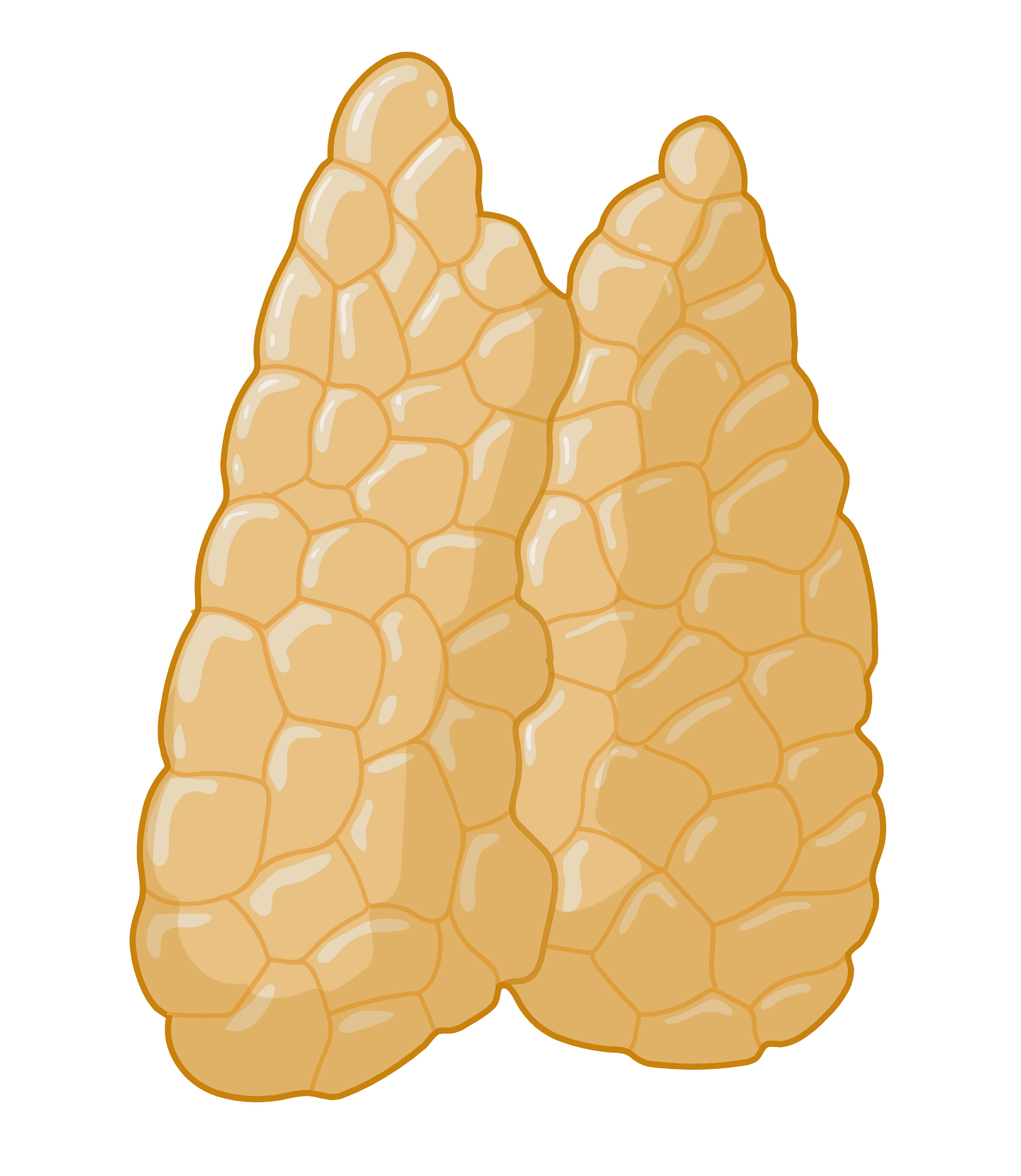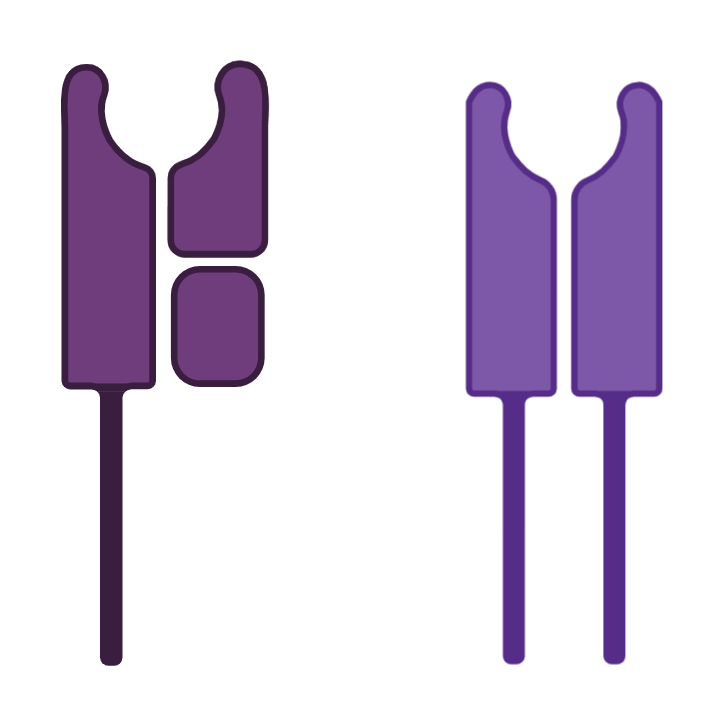
Thymus
Thymus: site of production of T-cell TCRs.
Maturing T cells are also called thymocytes.
Located in the thorax, the thymus is an organ dedicated to the maturation of thymocytes. Thymocytes do not possess any characteristics of T cells when they enter the thymus, and exit after having acquired all the properties of mature T cells, in particular their TCR. A double-selection takes place (positive and negative, see T cell ontogeny) ensuring that the mature T cells returning to the systemic circulation are both effective and harmless to the self.
Structure
There are two main zones in the thymus, each with distinct cell populations and functions.
- Cortical zone: mainly immature, double-negative or double-positive thymocytes are found within cortical thymic endothelial cells (cTEC).
- Bone marrow zone: mature single-positive thymocytes are found within medullary thymic endothelial cells (mTEC).
DC: dendritic cell;
DN: double negative;
DP: double positive;
SP: simple positive;
cTEC: cortical thymic epithelial cells;
mTEC: medullary thymic epithelial cells
Thymic epithelial cells (mTEC and cTEC) express high amounts of Class I and II HLA molecules on their surface. They support the positive and negative selection of T cells (see T cell ontogeny).
Between the two zones, the cortico-medullary junction is the zone through which very immature thymocytes from the bone marrow enter and mature thymocytes exit at the end of the maturation process.
Primary functions
T cell maturation
T cells undergo a maturation process marked in particular by the acquisition of the TCR (see T cell ontogeny) before being able to exercise their cytotoxic (CD8+ T cell) or auxiliary (CD4+ T cell) functions.
T cell selection
During their maturation, T cells undergo two major stages of selection, which make it possible to eliminate ineffective clones on the one hand, and self-reactive clones on the other.
- First step of selection: via the individual’s HLA molecules = MHC restriction.
This is the positive selection step, which takes place in the thymic cortex: the thymocyte will survive and continue its maturation if and only if it recognises:- a Class I HLA molecule: it then becomes a CD8+ T cell.
- a Class II HLA molecule: it then becomes a CD4+ T cell.
Mnemonic device
I (HLA) x 8 (lymphocyte) ⬄= II (HLA) x 4 (lymphocyte)
In other words, T thymocytes that do not recognise the individual’s HLA molecules are “lost” (degeneration of the clone by apoptosis in the absence of survival signals). It is an ingenious energy saving system of the immune system! Indeed, a T cell whose TCR does not recognise the individual’s HLA molecules can never be activated; it is preferable to delete these unnecessary clones. This step is also called MHC restriction, because the lost clones correspond to those which do not recognize the HLA molecules of the individual.
- Second step of selection: via self peptides presented by HLA molecules
This is the negative selection step that takes place in the thymic medulla.
Thymus cells have the particularity of expressing all the proteins that can be synthesised in the body, then embedding them in their HLA molecules. The thymocyte will receive death signals if it recognises a complex [HLA-self peptide] with too high an affinity, causing maturation to stop and its death.
Indeed, a T cell whose TCR recognises the [HLA-self peptide] complex is dangerous for the body because it is autoreactive. It is therefore a mechanism for protecting the integrity of the self.
This step is also called self-tolerance, because the lost clones correspond to those with a strong self-reactive potential.
What should be remembered
The thymus is the organ dedicated to the maturation of T cells, the crucial step of which is the acquisition of a functional TCR. There is also a double step of positive and negative selection allowing both:
- to stop the production of useless T cells because they would not recognise self-HLA molecules (positive selection).
- to avoid the circulation of self-reactive clones (negative selection).
- HLA molecules different from those of the transplanted individual, carried by the graft cells (direct alloreactivity mechanism)
- peptides different from the individual’s self (indirect alloreactivity mechanism)



